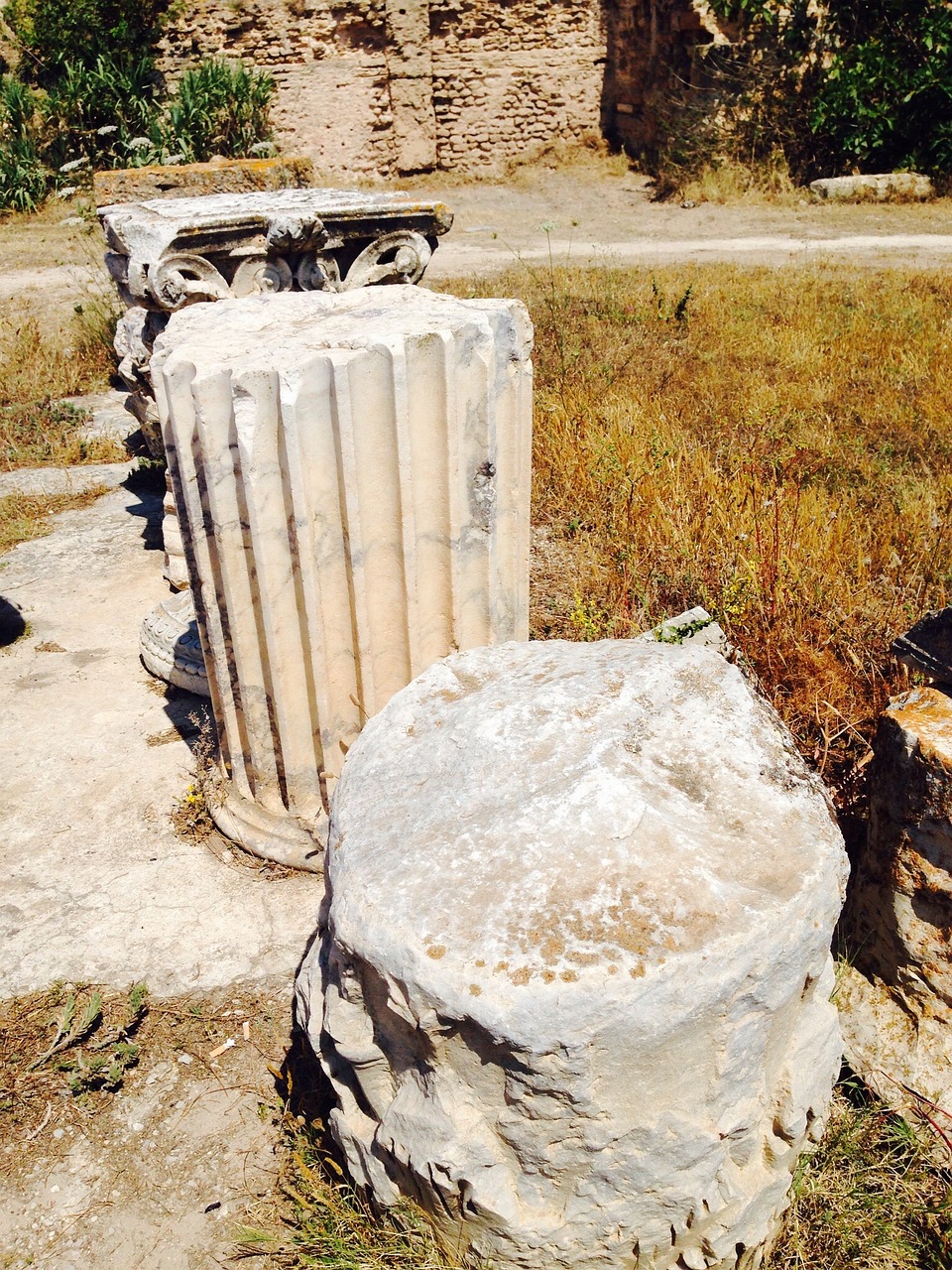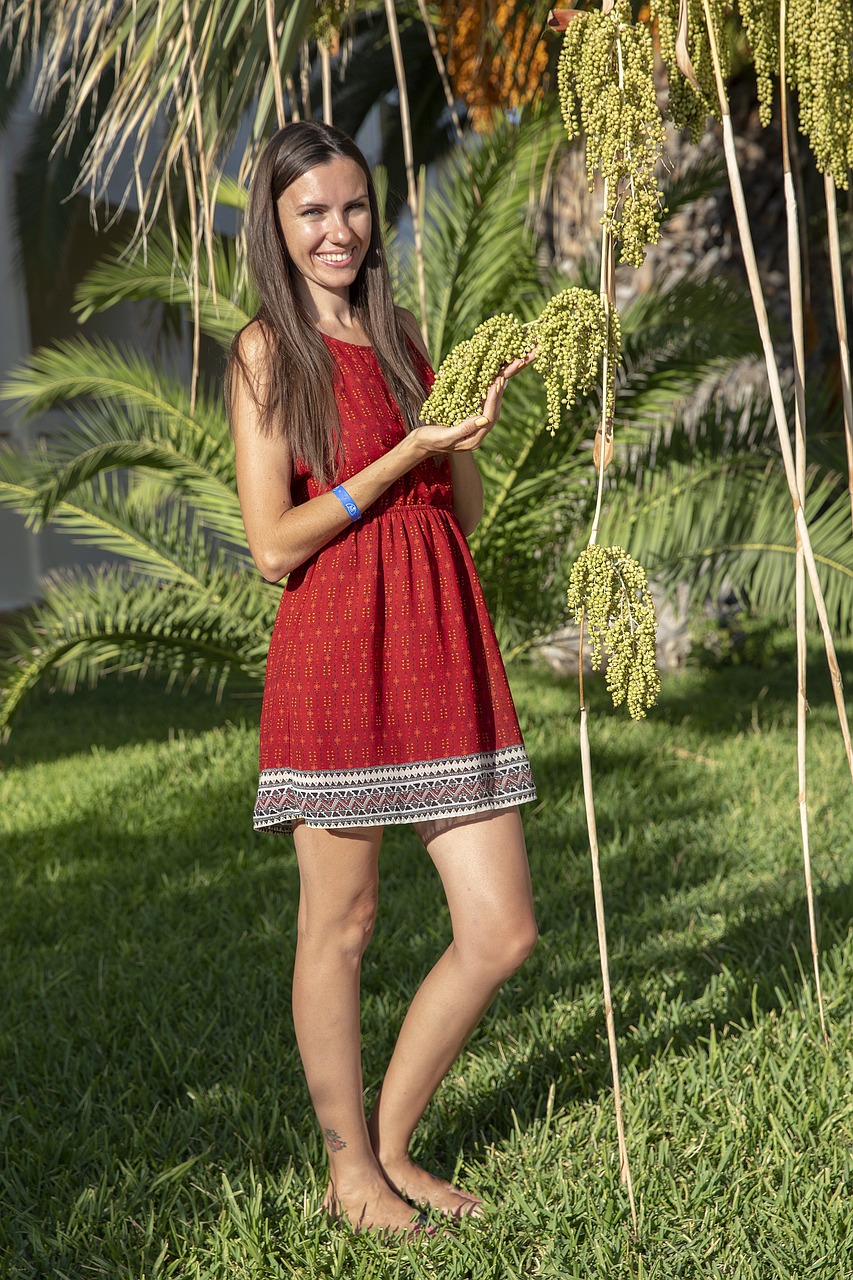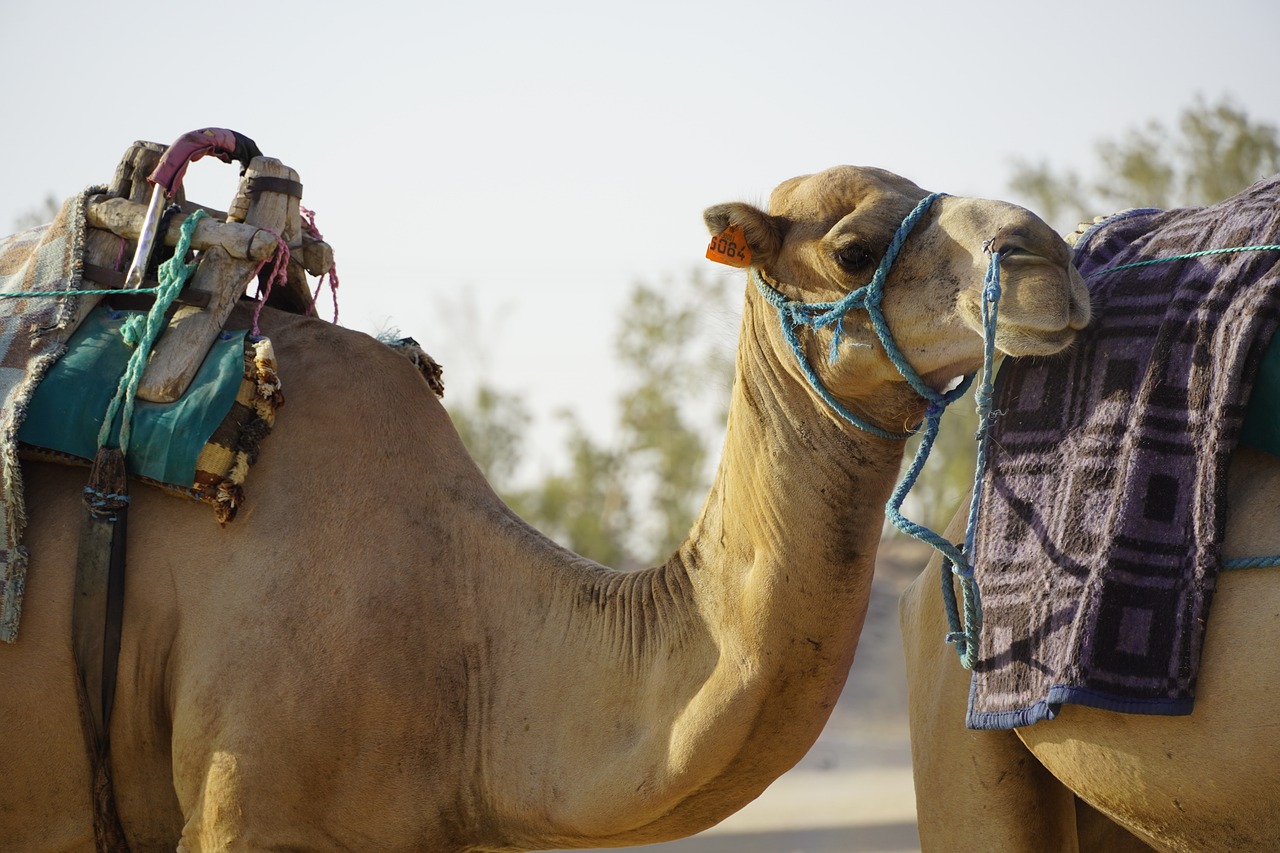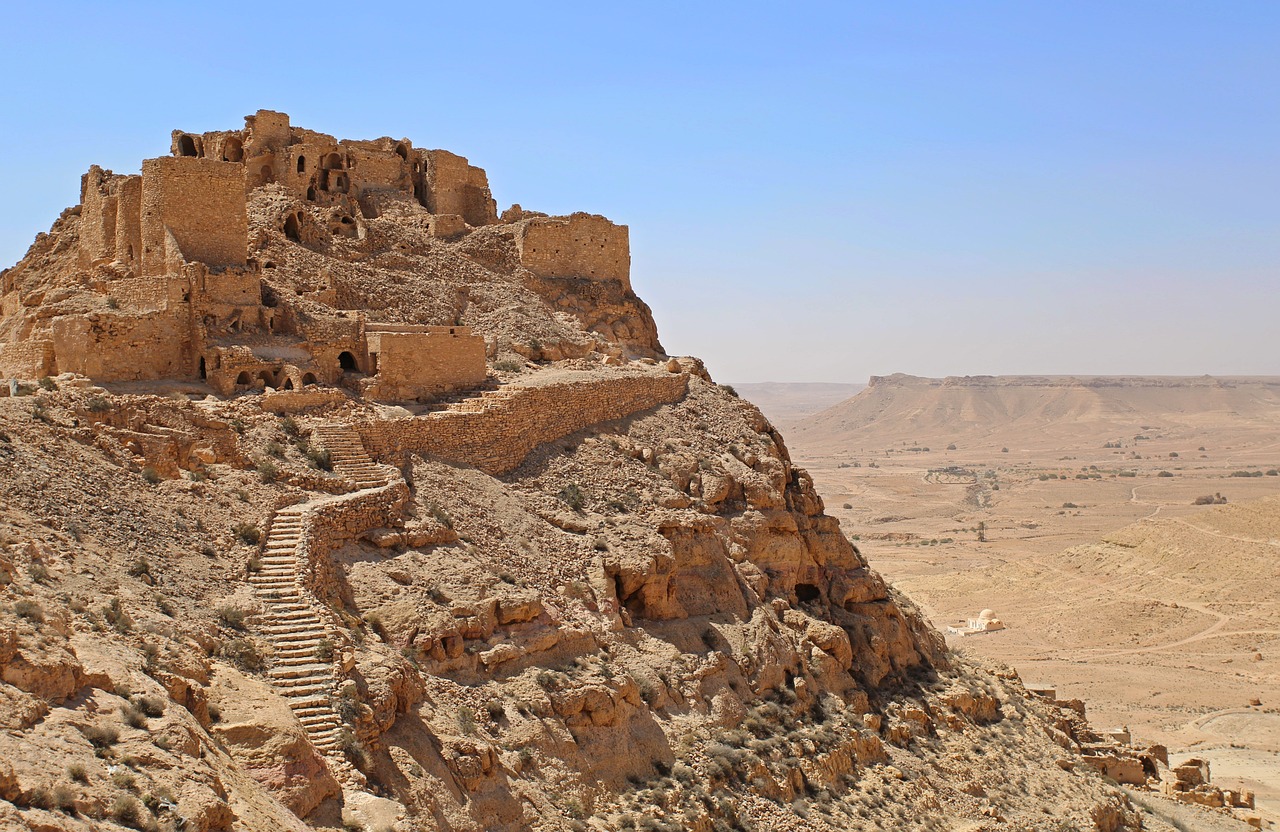Tunisia Video
Exploring Local Arts and Hobbies in Tunisia
Tunisia, located in North Africa, is a country rich in history, culture, and artistic traditions. From vibrant festivals to unique handicrafts, Tunisia offers a wide range of local arts and hobbies for visitors to explore. In this article, we will delve into twelve different aspects of Tunisia’s arts and hobbies scene, providing detailed information and insights into each.
Traditional Tunisian Pottery
Tunisian pottery is renowned for its vibrant colors and intricate designs. The art of pottery-making has been passed down through generations, and today, visitors can witness the craftsmanship firsthand. The pottery is typically made using local clay and decorated with traditional motifs such as geometric patterns and floral designs. Tourists can visit pottery workshops and even try their hand at creating their own unique piece of Tunisian pottery.
- Colorful Ceramics: Tunisian pottery is known for its vibrant colors, including shades of blue, green, and yellow.
- Traditional Motifs: Geometric patterns and floral designs are commonly found on Tunisian pottery.
- Workshop Experiences: Visitors can participate in pottery workshops to learn about the techniques and create their own pottery.
Ceramics have been a significant part of Tunisian culture for centuries. The use of bright colors and intricate patterns adds an element of beauty to everyday objects.
These motifs often have cultural and symbolic meanings and are meticulously hand-painted onto the pottery.
These workshops provide a unique opportunity to connect with Tunisian culture and take home a personalized souvenir.
Tunisian Carpet Weaving
Carpet weaving is another traditional craft that holds great importance in Tunisian culture. Tunisian carpets are known for their intricate designs and high-quality craftsmanship. The art of carpet weaving has been practiced for centuries, and many families continue to pass down the skills and techniques from one generation to the next. Visitors can explore carpet weaving workshops and witness the meticulous process of creating these beautiful handmade rugs.
- Rich Cultural Heritage: Tunisian carpets reflect the country’s rich cultural heritage.
- Handmade Craftsmanship: Tunisian carpets are meticulously woven by hand using traditional techniques.
- Visiting Workshops: Visitors can visit carpet weaving workshops to observe the weaving process and learn about the cultural significance of each design.
The designs often incorporate traditional symbols, motifs, and colors that hold cultural and historical significance.
Skilled artisans spend hours, sometimes even months, weaving intricate patterns and designs into each carpet.
These workshops provide a unique opportunity to appreciate the skill and dedication required to create these beautiful carpets.
Tunisian Traditional Music
Tunisian traditional music is a vibrant and integral part of the country’s cultural heritage. The music reflects the diversity of Tunisia’s history, blending various influences from Arab, Berber, and Andalusian traditions. Visitors can experience the enchanting sounds of Tunisian music through live performances and music festivals. Traditional instruments such as the oud, ney, and darbuka are commonly used, creating a unique and immersive musical experience.
- Musical Fusion: Tunisian traditional music blends various cultural influences, creating a unique fusion of sounds.
- Live Performances: Visitors can attend live music performances in traditional venues such as cafes and cultural centers.
- Music Festivals: Tunisia hosts numerous music festivals throughout the year, celebrating different genres and styles of traditional music.
The music reflects the country’s diverse history and the harmonious coexistence of different cultural traditions.
These performances provide an opportunity to immerse oneself in the captivating melodies and rhythms of Tunisian music.
These festivals attract both local and international musicians, offering a vibrant and diverse musical experience.
Tunisian Calligraphy
Tunisian calligraphy is a unique art form that combines the beauty of Arabic script with creative designs and motifs. Calligraphers in Tunisia create intricate and decorative compositions using traditional calligraphy techniques. The art of calligraphy holds significant cultural and religious importance in Tunisia, and visitors can explore calligraphy exhibitions and workshops to witness the skill and precision required to create these stunning works of art.
- Arabic Script: Tunisian calligraphy utilizes the elegant Arabic script as its foundation.
- Decorative Designs: Calligraphy in Tunisia often incorporates decorative designs and motifs.
- Exhibitions and Workshops: Visitors can visit calligraphy exhibitions to admire the artwork and attend workshops to learn the basics of calligraphy.
Calligraphers skillfully manipulate the script to create visually striking compositions.
These designs add depth and intricacy to the calligraphic compositions, making them visually captivating.
These experiences provide insight into the rich cultural and artistic heritage of Tunisian calligraphy.
Tunisian Embroidery
Tunisian embroidery, known as “Tatreez,” is a traditional craft that involves the intricate stitching of colorful threads onto fabric. The embroidery often features geometric patterns, floral motifs, and symbolic designs. Tunisian women have been practicing this art form for centuries, passing down their skills through generations. Visitors can explore embroidery workshops and witness the meticulous process of creating these beautiful and vibrant pieces of textile art.
- Colorful Threadwork: Tunisian embroidery is characterized by the use of vibrant and contrasting threads.
- Symbolic Motifs: Embroidery in Tunisia often incorporates symbolic motifs that hold cultural and historical significance.
- Workshop Visits: Visitors can visit embroidery workshops to observe the embroidery process and learn about the symbolism behind each design.
The threads are carefully stitched onto fabric to create intricate patterns and designs.
These motifs can represent various aspects of Tunisian culture, such as fertility, protection, or prosperity.
These workshops offer a chance to appreciate the skill and artistry involved in Tunisian embroidery.
Tunisian Traditional Dance
Traditional dance forms play a vital role in Tunisian culture, representing the country’s diverse heritage. Tunisian traditional dances are characterized by rhythmic movements, colorful costumes, and energetic performances. Each region in Tunisia has its own unique dance style, often influenced by Berber, Arab, or Andalusian traditions. Visitors can witness traditional dance performances at cultural events, festivals, and even in local villages.
- Diverse Dance Styles: Tunisia boasts a rich variety of traditional dance styles, each with its own distinct characteristics.
- Colorful Costumes: Tunisian traditional dances are often accompanied by vibrant costumes adorned with intricate embroidery and embellishments.
- Live Performances: Visitors can attend cultural events and festivals to witness traditional dance performances.
These dance forms reflect the cultural diversity and regional influences within the country.
The costumes add visual appeal and enhance the overall performance.
These performances offer a captivating glimpse into the rhythmic and expressive world of Tunisian traditional dance.
Tunisian Traditional Games
Tunisian traditional games provide entertainment and fun for both children and adults. These games have been played for generations and continue to be popular in Tunisian culture. From board games like “Mancala” to outdoor activities like “El Koura” (a form of street soccer), these traditional games offer a glimpse into the rich heritage of Tunisian recreational activities.
- Mancala: Mancala is a popular board game played throughout Tunisia.
- El Koura: El Koura is a traditional street soccer game played in Tunisia.
- Traditional Toys: Traditional Tunisian toys, such as wooden tops and handmade dolls, are also part of the country’s cultural heritage.
The game involves strategic thinking and counting, with the goal of capturing the opponent’s pieces.
Players use their feet and a small ball, aiming to score goals while displaying their skills and agility.
These toys reflect the simplicity and creativity of traditional playtime.
Tunisian Festivals and Celebrations
Tunisia is known for its vibrant festivals and celebrations, which provide a glimpse into the country’s cultural traditions and customs. From religious festivals to cultural events, there is always something happening in Tunisia. Visitors can join in the festivities, witness traditional ceremonies, enjoy local music and dance performances, and indulge in delicious Tunisian cuisine during these lively celebrations.
- Islamic Festivals: Tunisian festivals often include religious celebrations, such as Eid al-Fitr and Eid al-Adha.
- Cultural Events: Tunisia hosts various cultural events throughout the year, showcasing the country’s arts, music, and culinary traditions.
- Local Traditions: Many regions in Tunisia have their own unique festivals and celebrations that highlight local traditions and customs.
These festivals mark important milestones in the Islamic calendar and are celebrated with prayer, feasting, and family gatherings.
These events attract both locals and tourists, offering a unique opportunity to immerse oneself in Tunisian culture.
These celebrations provide an insight into the diverse cultural heritage of Tunisia.
Tunisian Traditional Clothing
Traditional clothing in Tunisia reflects the country’s rich history and cultural diversity. Each region has its own distinct style of clothing, with unique fabrics, colors, and designs. Traditional garments, such as the “Jebba” (a long robe) and the “Burnous” (a cloak), are still worn on special occasions and during cultural festivities. Visitors can explore local markets and boutiques to admire and even purchase traditional Tunisian clothing.
- Regional Styles: Tunisian traditional clothing varies from region to region, with each area having its own unique style.
- Special Occasions: Traditional garments are typically worn during special occasions, such as weddings, religious ceremonies, and cultural festivals.
- Market Exploration: Visitors can explore local markets and boutiques to discover traditional Tunisian clothing.
These styles often incorporate local fabrics, embroidery, and traditional accessories.
These garments add a touch of elegance and cultural pride to the celebrations.
These markets offer a wide range of options, from intricately embroidered garments to beautifully woven fabrics.
Tunisian Traditional Cuisine
Tunisian cuisine is a delightful fusion of flavors, influenced by Mediterranean, Arab, and Berber culinary traditions. The country’s unique dishes and aromatic spices make it a paradise for food enthusiasts. From the famous “Couscous” to the flavorful “Brik,” visitors can indulge in a variety of traditional Tunisian dishes at local restaurants and street food stalls.
- Couscous: Couscous is a staple dish in Tunisian cuisine, made from semolina grains and accompanied by various vegetables, meat, or fish.
- Brik: Brik is a popular Tunisian street food, consisting of a thin pastry filled with ingredients such as egg, tuna, or cheese.
- Spices and Flavors: Tunisian cuisine is known for its bold and aromatic flavors, with spices such as cumin, coriander, and harissa being commonly used.
It is often considered the national dish of Tunisia and is enjoyed by locals and visitors alike.
It is typically deep-fried to perfection, resulting in a crispy and flavorful snack.
These spices add depth and complexity to the dishes, creating a memorable culinary experience.
Tunisian Handicrafts
Tunisian handicrafts showcase the country’s artistic talent and craftsmanship. From beautiful leatherwork to intricate metalwork, Tunisian artisans create unique and high-quality products. Visitors can explore local markets and artisan workshops to discover a wide range of handicrafts, including leather goods, ceramics, jewelry, and woodwork.
- Leatherwork: Tunisian leatherwork is highly regarded for its quality and craftsmanship.
- Metalwork: Tunisian metalwork is known for its intricate designs and decorative elements.
- Artisan Workshops: Visitors can visit artisan workshops to witness the creation process and even participate in hands-on activities.
Artisans create a variety of products, including bags, shoes, and accessories, using traditional techniques.
Artisans skillfully craft items such as lamps, trays, and jewelry using brass, copper, and silver.
These workshops provide an opportunity to support local artisans and take home unique Tunisian handicrafts.
Tunisia Image 1:

Tunisian Traditional Music
Tunisian traditional music is a vibrant and integral part of the country’s cultural heritage. The music reflects the diversity of Tunisia’s history, blending various influences from Arab, Berber, and Andalusian traditions. Visitors can experience the enchanting sounds of Tunisian music through live performances and music festivals. Traditional instruments such as the oud, ney, and darbuka are commonly used, creating a unique and immersive musical experience.
- Musical Fusion: Tunisian traditional music blends various cultural influences, creating a unique fusion of sounds.
- Live Performances: Visitors can attend live music performances in traditional venues such as cafes and cultural centers.
- Music Festivals: Tunisia hosts numerous music festivals throughout the year, celebrating different genres and styles of traditional music.
The music reflects the country’s diverse history and the harmonious coexistence of different cultural traditions.
These performances provide an opportunity to immerse oneself in the captivating melodies and rhythms of Tunisian music.
These festivals attract both local and international musicians, offering a vibrant and diverse musical experience.
Tunisian Embroidery
Tunisian embroidery, known as “Tatreez,” is a traditional craft that involves the intricate stitching of colorful threads onto fabric. The embroidery often features geometric patterns, floral motifs, and symbolic designs. Tunisian women have been practicing this art form for centuries, passing down their skills through generations. Visitors can explore embroidery workshops and witness the meticulous process of creating these beautiful and vibrant pieces of textile art.
- Colorful Threadwork: Tunisian embroidery is characterized by the use of vibrant and contrasting threads.
- Symbolic Motifs: Embroidery in Tunisia often incorporates symbolic motifs that hold cultural and historical significance.
- Workshop Visits: Visitors can visit embroidery workshops to observe the embroidery process and learn about the symbolism behind each design.
The threads are carefully stitched onto fabric to create intricate patterns and designs.
These motifs can represent various aspects of Tunisian culture, such as fertility, protection, or prosperity.
These workshops offer a chance to appreciate the skill and artistry involved in Tunisian embroidery.
Tunisian Traditional Dance
Traditional dance forms play a vital role in Tunisian culture, representing the country’s diverse heritage. Tunisian traditional dances are characterized by rhythmic movements, colorful costumes, and energetic performances. Each region in Tunisia has its own unique dance style, often influenced by Berber, Arab, or Andalusian traditions. Visitors can witness traditional dance performances at cultural events, festivals, and even in local villages.
- Diverse Dance Styles: Tunisia boasts a rich variety of traditional dance styles, each with its own distinct characteristics.
- Colorful Costumes: Tunisian traditional dances are often accompanied by vibrant costumes adorned with intricate embroidery and embellishments.
- Live Performances: Visitors can attend cultural events and festivals to witness traditional dance performances.
These dance forms reflect the cultural diversity and regional influences within the country.
The costumes add visual appeal and enhance the overall performance.
These performances offer a captivating glimpse into the rhythmic and expressive world of Tunisian traditional dance.
Tunisia Image 2:

Tunisian Traditional Games
Tunisian traditional games provide entertainment and fun for both children and adults. These games have been played for generations and continue to be popular in Tunisian culture. From board games like “Mancala” to outdoor activities like “El Koura” (a form of street soccer), these traditional games offer a glimpse into the rich heritage of Tunisian recreational activities.
- Mancala: Mancala is a popular board game played throughout Tunisia.
- El Koura: El Koura is a traditional street soccer game played in Tunisia.
- Traditional Toys: Traditional Tunisian toys, such as wooden tops and handmade dolls, are also part of the country’s cultural heritage.
The game involves strategic thinking and counting, with the goal of capturing the opponent’s pieces.
Players use their feet and a small ball, aiming to score goals while displaying their skills and agility.
These toys reflect the simplicity and creativity of traditional playtime.
Tunisian Festivals and Celebrations
Tunisia is known for its vibrant festivals and celebrations, which provide a glimpse into the country’s cultural traditions and customs. From religious festivals to cultural events, there is always something happening in Tunisia. Visitors can join in the festivities, witness traditional ceremonies, enjoy local music and dance performances, and indulge in delicious Tunisian cuisine during these lively celebrations.
- Islamic Festivals: Tunisian festivals often include religious celebrations, such as Eid al-Fitr and Eid al-Adha.
- Cultural Events: Tunisia hosts various cultural events throughout the year, showcasing the country’s arts, music, and culinary traditions.
- Local Traditions: Many regions in Tunisia have their own unique festivals and celebrations that highlight local traditions and customs.
These festivals mark important milestones in the Islamic calendar and are celebrated with prayer, feasting, and family gatherings.
These events attract both locals and tourists, offering a unique opportunity to immerse oneself in Tunisian culture.
These celebrations provide an insight into the diverse cultural heritage of Tunisia.
Tunisian Traditional Clothing
Traditional clothing in Tunisia reflects the country’s rich history and cultural diversity. Each region has its own distinct style of clothing, with unique fabrics, colors, and designs. Traditional garments, such as the “Jebba” (a long robe) and the “Burnous” (a cloak), are still worn on special occasions and during cultural festivities. Visitors can explore local markets and boutiques to admire and even purchase traditional Tunisian clothing.
- Regional Styles: Tunisian traditional clothing varies from region to region, with each area having its own unique style.
- Special Occasions: Traditional garments are typically worn during special occasions, such as weddings, religious ceremonies, and cultural festivals.
- Market Exploration: Visitors can explore local markets and boutiques to discover traditional Tunisian clothing.
These styles often incorporate local fabrics, embroidery, and traditional accessories.
These garments add a touch of elegance and cultural pride to the celebrations.
These markets offer a wide range of options, from intricately embroidered garments to beautifully woven fabrics.
Tunisian Traditional Cuisine
Tunisian cuisine is a delightful fusion of flavors, influenced by Mediterranean, Arab, and Berber culinary traditions. The country’s unique dishes and aromatic spices make it a paradise for food enthusiasts. From the famous “Couscous” to the flavorful “Brik,” visitors can indulge in a variety of traditional Tunisian dishes at local restaurants and street food stalls.
- Couscous: Couscous is a staple dish in Tunisian cuisine, made from semolina grains and accompanied by various vegetables, meat, or fish.
- Brik: Brik is a popular Tunisian street food, consisting of a thin pastry filled with ingredients such as egg, tuna, or cheese.
- Spices and Flavors: Tunisian cuisine is known for its bold and aromatic flavors, with spices such as cumin, coriander, and harissa being commonly used.
It is often considered the national dish of Tunisia and is enjoyed by locals and visitors alike.
It is typically deep-fried to perfection, resulting in a crispy and flavorful snack.
These spices add depth and complexity to the dishes, creating a memorable culinary experience.
Tunisian Handicrafts
Tunisian handicrafts showcase the country’s artistic talent and craftsmanship. From beautiful leatherwork to intricate metalwork, Tunisian artisans create unique and high-quality products. Visitors can explore local markets and artisan workshops to discover a wide range of handicrafts, including leather goods, ceramics, jewelry, and woodwork.
- Leatherwork: Tunisian leatherwork is highly regarded for its quality and craftsmanship.
- Metalwork: Tunisian metalwork is known for its intricate designs and decorative elements.
- Artisan Workshops: Visitors can visit artisan workshops to witness the creation process and even participate in hands-on activities.
Artisans create a variety of products, including bags, shoes, and accessories, using traditional techniques.
Artisans skillfully craft items such as lamps, trays, and jewelry using brass, copper, and silver.
These workshops provide an opportunity to support local artisans and take home unique Tunisian handicrafts.
Tunisia Image 3:

Conclusion
Exploring local arts and hobbies in Tunisia offers a fascinating journey into the country’s rich cultural heritage. From traditional pottery and carpet weaving to vibrant music and dance performances, Tunisia’s arts scene is a feast for the senses. Visitors can immerse themselves in the beauty of calligraphy, embroidery, and handicrafts, while also indulging in the flavors of traditional cuisine. The festivals, celebrations, and traditional games provide a glimpse into the lively and vibrant culture of Tunisia. By exploring these aspects of Tunisia’s arts and hobbies, visitors can gain a deeper appreciation for the country’s history, traditions, and creativity.
References
– Tunisian National Tourist Office: www.discovertunisia.com
– Tunisian Ministry of Culture: www.culture.gov.tn
– Tunisian Handicrafts: www.artisans.gov.tn
– Tunisian Traditional Music: www.tunisianmusic.com
– Tunisian Cuisine: www.tunisiancuisine.com


